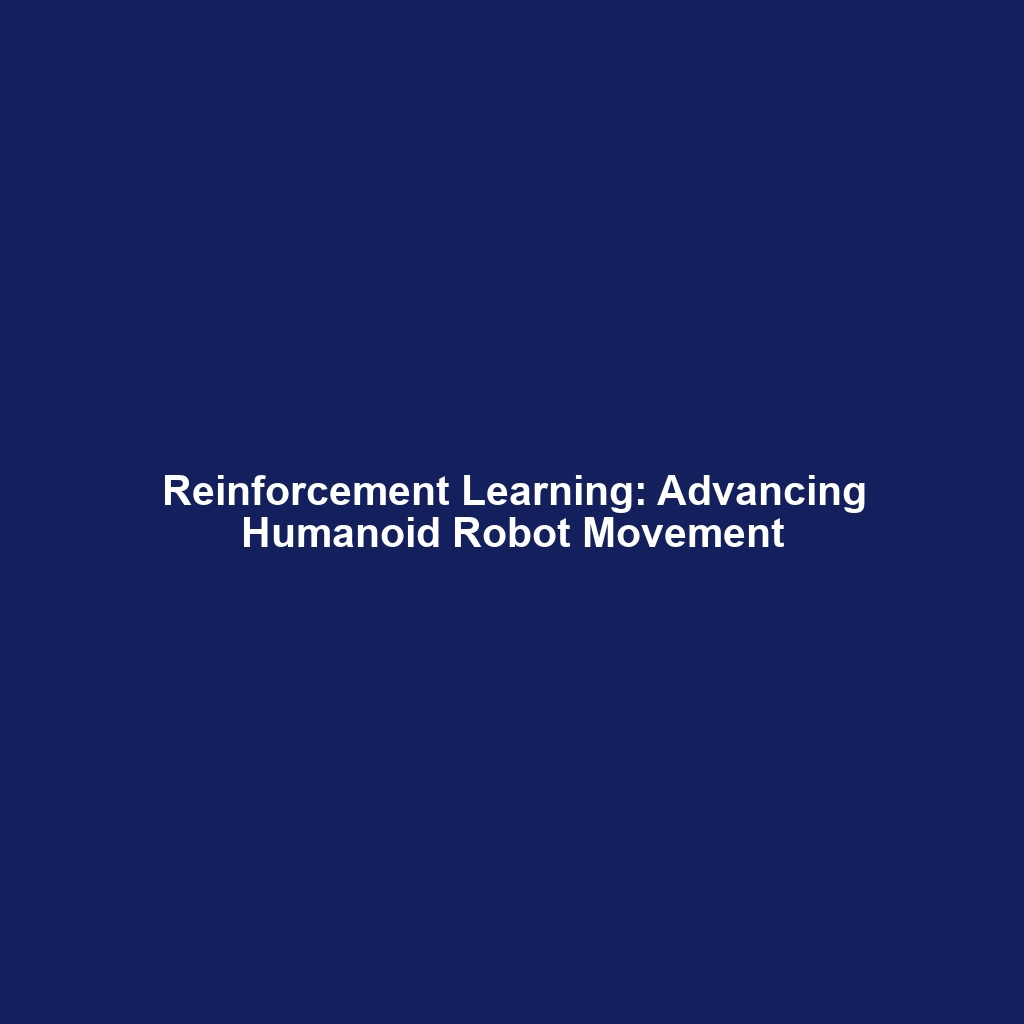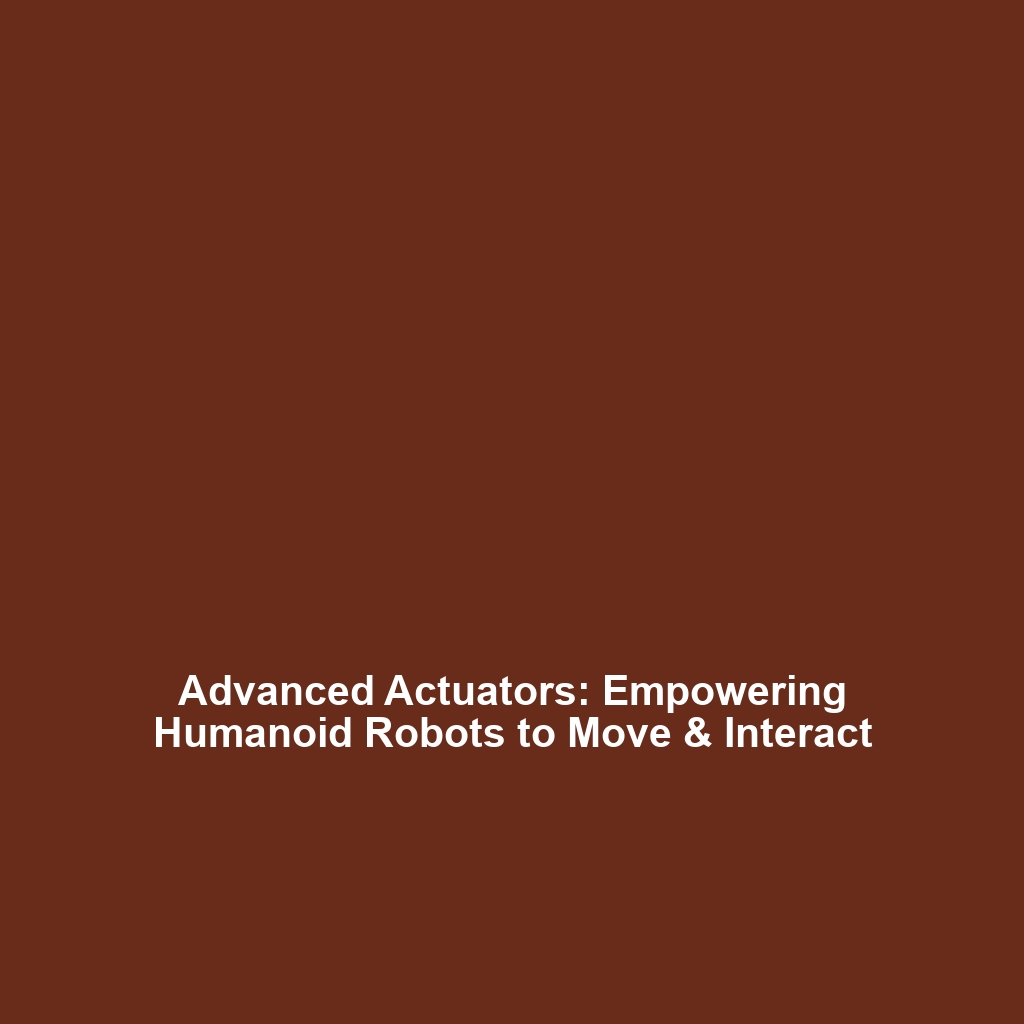Reinforcement Learning for Humanoid Movement: Teaching Robots to Adapt
Introduction
Reinforcement Learning (RL) has emerged as a foundational technique in the field of robotics, particularly in the context of humanoid robots. This powerful machine learning paradigm enables robots to learn and adapt their movements through trial-and-error, mimicking human-like agility and coordination. As humanoid robots are increasingly deployed in real-world scenarios, understanding how to teach them to adapt using reinforcement learning becomes critical. The ability of these robots to autonomously improve their performance not only enhances their functionality but also opens up a world of possibilities in various domains, from healthcare to manufacturing.
Key Concepts
Reinforcement Learning is grounded in a few core concepts essential for teaching humanoid robots to adapt:
- Agent and Environment: In RL, the robot acts as an agent that interacts with its environment.
- Rewards: The agent receives feedback from the environment in the form of rewards or penalties based on its actions.
- Policies: The strategy used by the agent to decide which actions to take in various situations.
- Exploration vs. Exploitation: A balance that must be maintained between discovering new strategies and using known strategies to maximize rewards.
These principles are vital in developing adaptive behaviors in humanoid robots, enabling them to perform complex tasks effectively while adjusting to new environments.
Applications and Real-World Uses
The application of reinforcement learning in humanoid movement encompasses various domains, demonstrating its significance in real-world scenarios:
- Healthcare: Humanoid robots trained via RL can assist in rehabilitation exercises for patients, adapting movements to suit individual recovery needs.
- Entertainment: Robots in the gaming and entertainment industry can learn to perform complex dance moves and interact with audiences in real-time.
- Manufacturing: Adaptive humanoid robots can optimize workflows, learning to handle tasks better as they gain experience.
These examples illustrate the crucial role that Reinforcement Learning plays in enhancing the abilities of humanoid robots and adapting them to specific tasks.
Current Challenges
Despite the promising advancements, implementing reinforcement learning for humanoid movement faces several challenges:
- Sample Efficiency: Training these robots often requires a vast amount of data or interactions which can be prohibitively costly.
- Safety Concerns: Ensuring safe behavior during training is crucial, as robots may exhibit unpredictable movements.
- Complex Environments: Humanoid robots must navigate diverse and dynamic environments that can complicate the learning process.
Addressing these challenges is necessary to enhance the efficacy of RL in developing adaptive humanoid robots.
Future Research and Innovations
The future of reinforcement learning in humanoid robots looks promising with ongoing innovations and research:
- Sim-to-Real Transfer: Researching better methodologies for transferring learned behaviors from simulation to the real world.
- Multi-Agent Learning: Exploring how multiple robots can learn collaboratively in shared environments.
- Integration with Other AI Techniques: Combining RL with other approaches like deep learning and evolutionary algorithms for improved learning outcomes.
Such breakthroughs could drastically improve the adaptability and intelligence of humanoid robots in various applications.
Conclusion
In summary, Reinforcement Learning for Humanoid Movement is a critical area of study in robotics, facilitating the development of adaptable and intelligent robots. As challenges are addressed and research progresses, the potential for humanoid robots continues to expand. For those interested in further reading on related topics, consider exploring our articles on robotics advancements and machine learning techniques.


